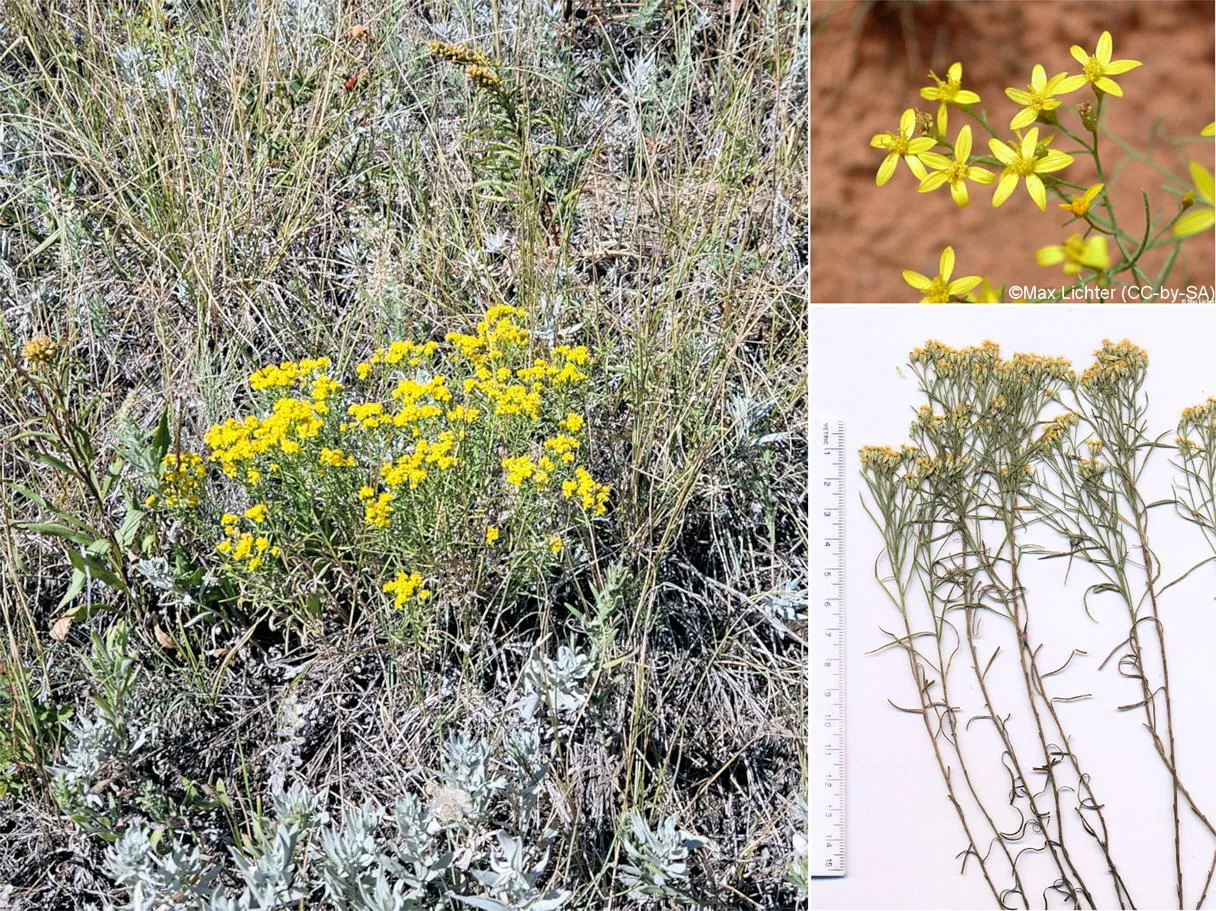By Tom Schweich
Broom Snakeweed — Gutierrezia sarothrae (Pursh) Britton & Rusby — is common in Golden and has been found in all our open spaces. A small, unassuming shrub, it may often be overlooked, in part because it does not bloom until August or September.
The common name “snakeweed” refers to its medicinal use to treat snakebites and the “broom” refers to its use to make brooms. Our plant has also been called “matchweed” because of the similar appearance of the stems and flower heads to matches. It has also been called “turpentine weed” due to its odor. The recent ethnographic study of Golden (O’Meara, 2022) shows that local tribes were aware of Broom Snakeweed, but there is no information about how they used it.
Mostly collected just along the high plains in Jefferson County, our plant is found in almost every county of Colorado. It is ubiquitous across the North American Cordillera from central Kansas west to the eastern Sierra Nevada of California and from Manitoba in the north to central Mexico in the south.
Not surprisingly for such a widely distributed plant, it was found by several early explorers and given multiple names by various botanists of the early 19th century, reflecting both the American and the Spanish heritage of the western United States. The first recorded scientific collection was made by the Lewis & Clark expedition (1804) along Big Bend of the Missouri River (South Dakota). Lewis & Clark’s collection was described as Solidago sarothrae, i.e., a type of Goldenrod, by Frederich Pursh (1814) in his Flora of North America. The species name “sarothrae,” is from the Greek “sarum” which means “broom” referring to the broom-like appearance of the stems.
The Spanish botanist Mariano Lagasca y Segura (1816), Director of the Real Jardin Botanico (Madrid), proposed the genus name Gutierrezia for the same plant found in “Nova Hispania.” That was probably Mexico but could include Texas, New Mexico, and California. Lagasca named the genus Gutierrezia for Pedro Gutierrez de Salceda, a 19th century Spanish nobleman, botanist, and apothecary, also at the Real Jardin Botanico.
Other 19th Century botanists we have previously met, such as Thomas Nuttall, and John Torrey and Asa Gray, proposed various other names for our plant, but it was quite some time later that Britton & Rusby (1887) correctly put Gutierrezia and sarothrae together and published the current name, Gutierrezia sarothrae. They did so in a scientific paper titled, “A list of plants collected by Miss Mary B. Croft, 1884-'85, at San Diego, Texas, near the Headwaters of the Rio Dulce.” San Diego, Texas, is in southern Texas, about mid-way between Corpus Cristi and Laredo.
References:
Britton, Nathaniel Lord, and H. H. Rusby. 1887. A list of plants collected by Miss Mary B. Croft, 1884-'85, at San Diego, Texas, near the Headwaters of the Rio Dulce. Transactions of the New York Academy of Sciences. 7: 7-14.
O'Meara, Sean. 2022. Indigenous Connections: Native American Ethnographic Study of Golden, Colorado and the Clear Creek Valley. Tucson, AZ: Anthropological Research, LLC, May 30, 2022.









